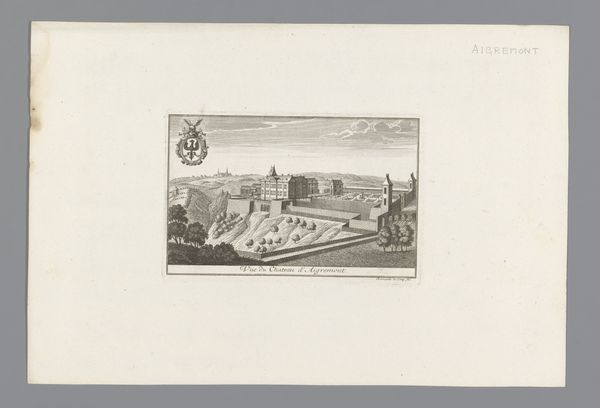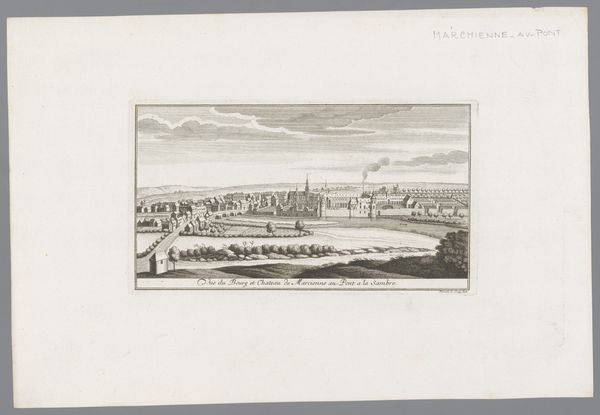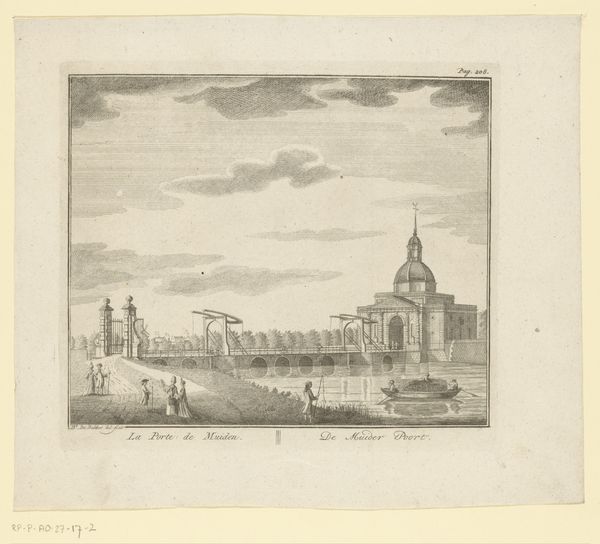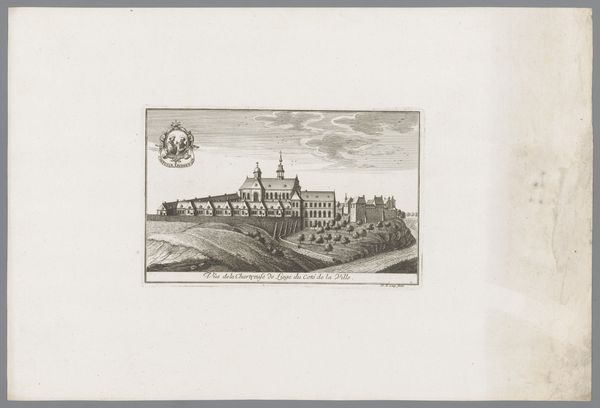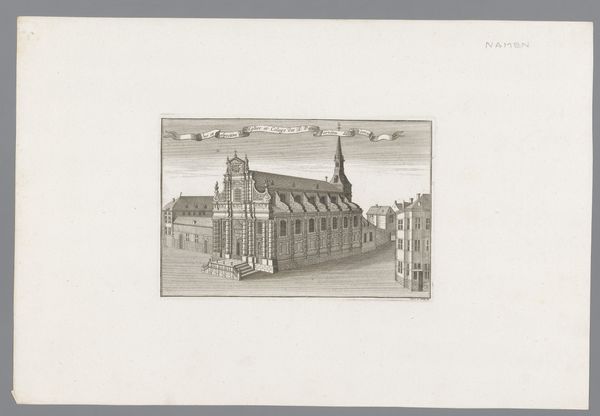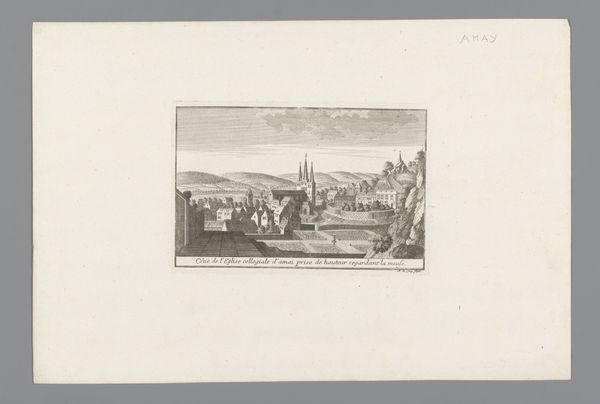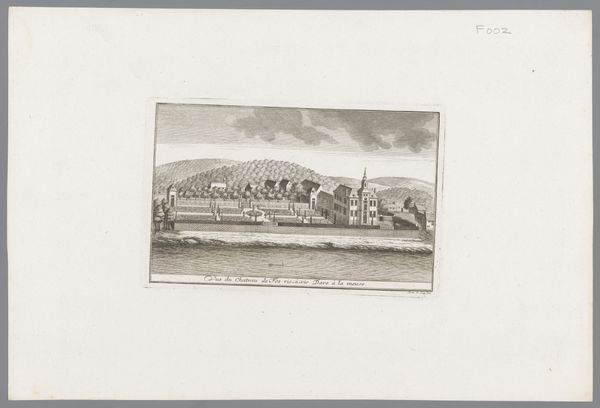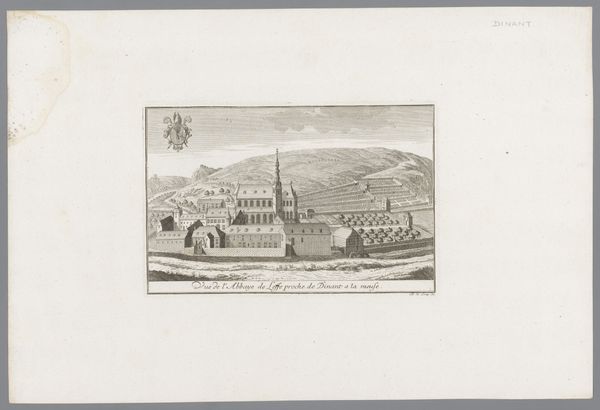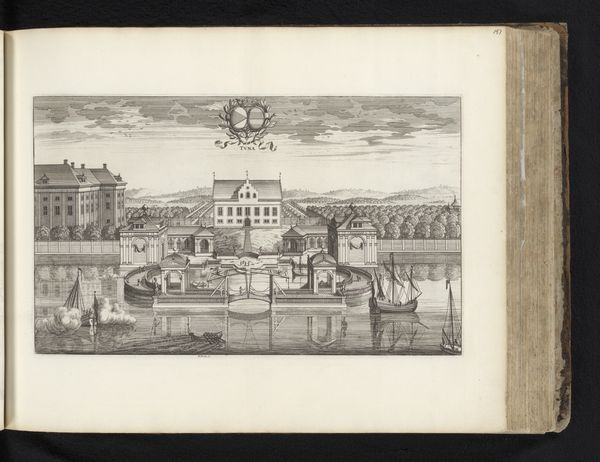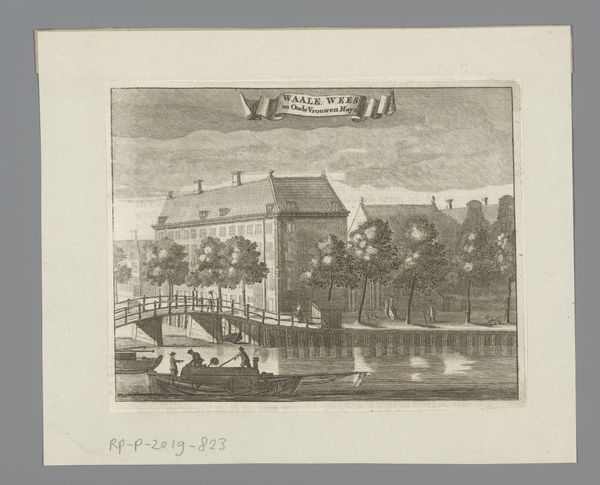
print, engraving
#
baroque
# print
#
cityscape
#
engraving
Dimensions: height 148 mm, width 242 mm
Copyright: Rijks Museum: Open Domain
Curator: Before us we have an engraving titled "Gezicht op het kasteel van Marchienne-au-Pont," dating back to between 1738 and 1744, created by an anonymous artist. Editor: My first thought is the almost unsettling rigidity of the landscape, a powerful demonstration of man’s will imposing itself on the natural world. The straight lines, the almost perfect symmetry… Curator: Absolutely. Think about the socio-political context. Formal gardens like this weren’t just aesthetic choices, they projected wealth and absolute power. These elaborate structures, so painstakingly produced, demonstrated control over not just the land but the labour required to maintain them. Who designed these gardens? Who worked the land? How were the materials transported and arranged? These questions get to the heart of this image’s power. Editor: Good point. And consider where it was displayed, most likely for those already within its socio-economic sphere, reinforcing its presence and normalizing the distribution of resources. The cityscape becomes both symbol and site of power, reproduced for the elite as validation of their societal standing. Curator: Speaking of reproducibility, we have an engraving, one of the more accessible art forms. Considering the print medium invites thoughts about dissemination and access; however limited compared to modern-day modes, it offered a somewhat democratized form of the elite’s imagery. Editor: I agree. The choice to depict Marchienne-au-Pont suggests a deliberate intent to promote or commemorate its social importance within its specific moment in time. Beyond being art, it acts almost like early propaganda. Curator: It provides insights into 18th century perceptions of the landscape and aristocratic power. It speaks to material culture, artistic techniques and labour practices of the era, all embedded within what might seem like just a simple scene. Editor: So true! The social narratives woven into this precise, black-and-white cityscape are worth deeper considerations than its pleasing appearance might at first suggest.
Comments
No comments
Be the first to comment and join the conversation on the ultimate creative platform.
